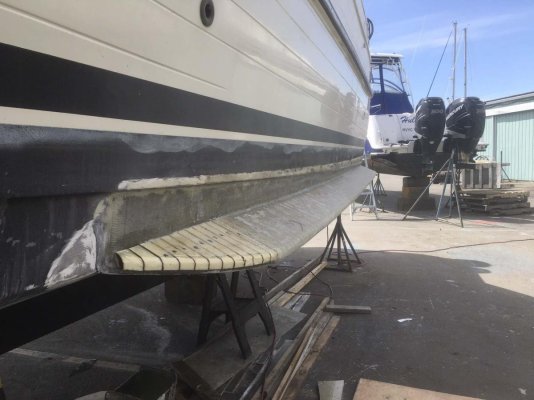Boat builders don't like multipiece molds. You have a parting line to finish, and that's not a good think in a female mold gelcoat boat. For series production you could just mold a separate piece that fits, and bond it on with Plexus.
People keep worrying about two things: slings and hitting the dock with them. At least with the Independent Shipwrights version, ain't a problem. Don't worry about it.
On his, they drill holes in them to let the flood so they don't change buoyancy. I plugged the holes with set screws as I think I want the buoyancy. Can always remove the screws and let them flood. I calculated mine at about 300 lbs net buoyancy, (400 lbs volume minus perhaps about 100 lbs of laminate).
People keep worrying about two things: slings and hitting the dock with them. At least with the Independent Shipwrights version, ain't a problem. Don't worry about it.
On his, they drill holes in them to let the flood so they don't change buoyancy. I plugged the holes with set screws as I think I want the buoyancy. Can always remove the screws and let them flood. I calculated mine at about 300 lbs net buoyancy, (400 lbs volume minus perhaps about 100 lbs of laminate).

